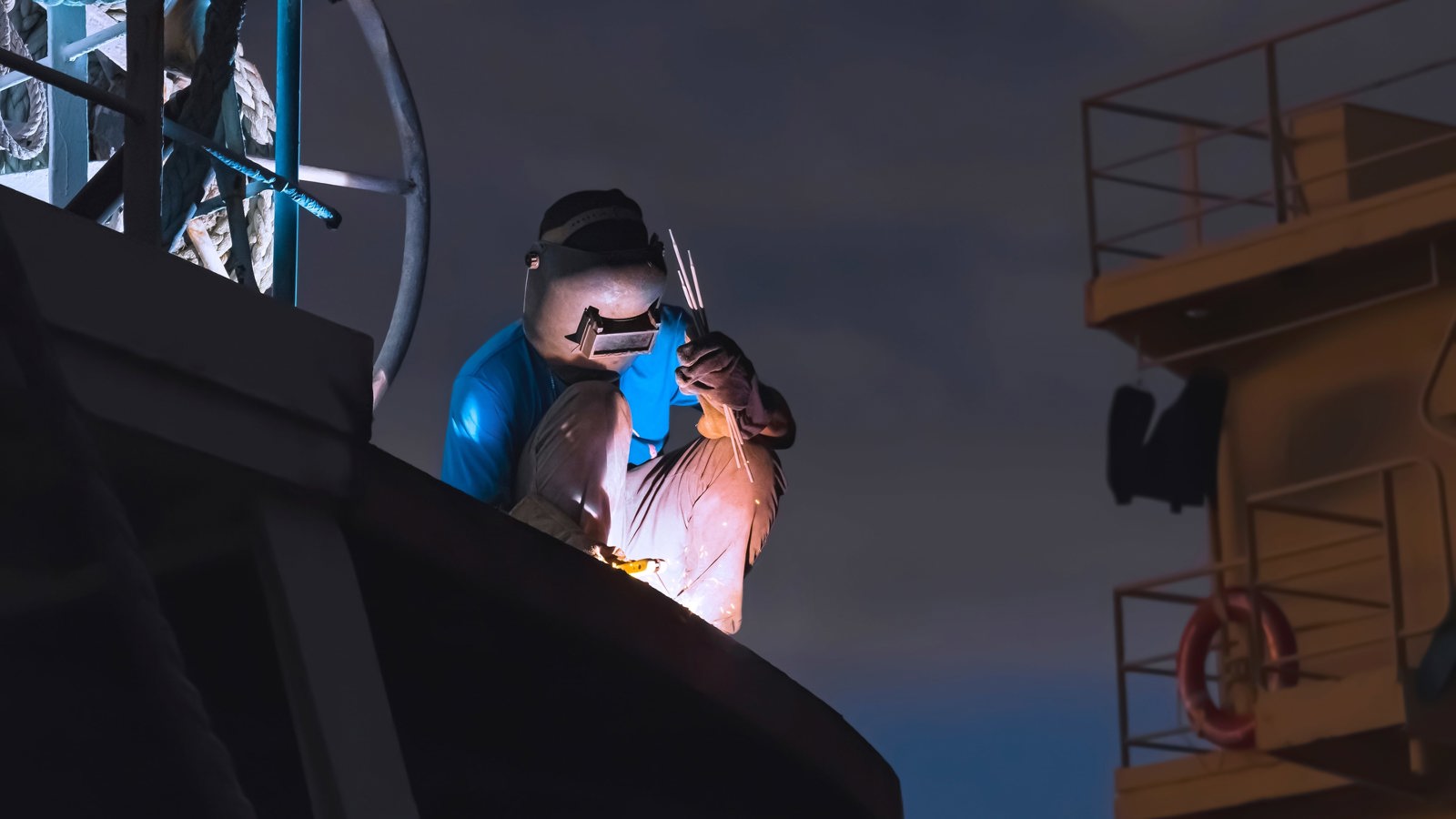
Best practices for shipboard welding
There are many factors to maintaining maritime safety. To start, a clean environment is a must. Ship inspection must be thorough, accurate, and professional. There must be systems in place to safeguard the mental health and wellbeing of crew. Similarly, repairs and maintenance work through welding and cutting—key activities that keep vessels seaworthy—must be conducted safely, too.
Fostering a culture of safety and health in the workplace is a collective effort that requires consistency, inclusion, and working together to find appropriate, sustainable, and effective ways to keep the workplace safe.
In maritime welding, safety should be top-of-mind
Welding can be unsafe when tools are worn down due to continuous use, are unmaintained, and are non-compliant with regulations. Procedures may be inefficient or inconsistent.
Crew members who do not have the appropriate training and competency levels or skills may not carry out shipboard welding safely. It pays to ensure that all maritime fitters have the necessary welding skills and competencies, and that these are continuously refreshed or reviewed.
When not conducted safely, welding can cause three serious consequences:
- Increase the risk of accidents, resulting in injuries and fatalities onboard
- Damage to welding equipment or other critical/high-value equipment
- Result in inefficient repairs and maintenance.
But conducting welding safety checks can be tricky
For seafarers, making sure that welding will be done safely at all times can be difficult. For one, it can be time-consuming without a streamlined process. Busy ship operators and crew members may have a hard time completing all the tasks required to keep welding equipment in good condition.
Moreover, there are a lot of safety protocols, and keeping track of them can be tedious.
Finally, ensuring equipment and processes comply with regulations adds another layer of complexity.
How to get welding safety right
There are some ways to get welding safety right off the bat.
Firstly, you should procure good tools and equipment. You can do so by using welding machines designed specifically for the maritime industry, and purchase from reputable suppliers who have proven safety track records in the maritime industry like Wilhelmsen Ships Service’s UNITOR brand. Finally, pick and standardize tools across various ports and workplaces.
Next, empower your crew by providing training for how to use the welding equipment properly, efficiently, and safely.
To maintain safety standards, conduct welding safety checks regularly and document everything.
Partnering for safety
Finally, you can consider partnering with reputable suppliers with years of experience and expertise. Wilhelmsen’s Welding Safety Inspection (WSI) service can help uncover early signs of deterioration and identify potential non-compliance so you can act quickly to mitigate risks.
The WSI service is safe and documented. It offers a proven approach, is standardized, saves costs, and provides assurance. Over the last 12 months. we've conducted over 400 inspections and helped ensure the safety and compliance of hot work equipment onboard customer vessels through our WSI service.
Conclusion
Welding safety inspection is vital to keeping your crew, cargo, and vessels safe. Yet, it doesn’t have to be difficult or complex. With over a century of maritime experience, we can help keep your welding equipment and processes above-board. We believe that building a positive occupational safety and health culture takes a concerted and consistent effort.
Reach out to us at Wilhelmsen Ships Service to learn more about how we could work together to ensure your vessels are a safe space for all.